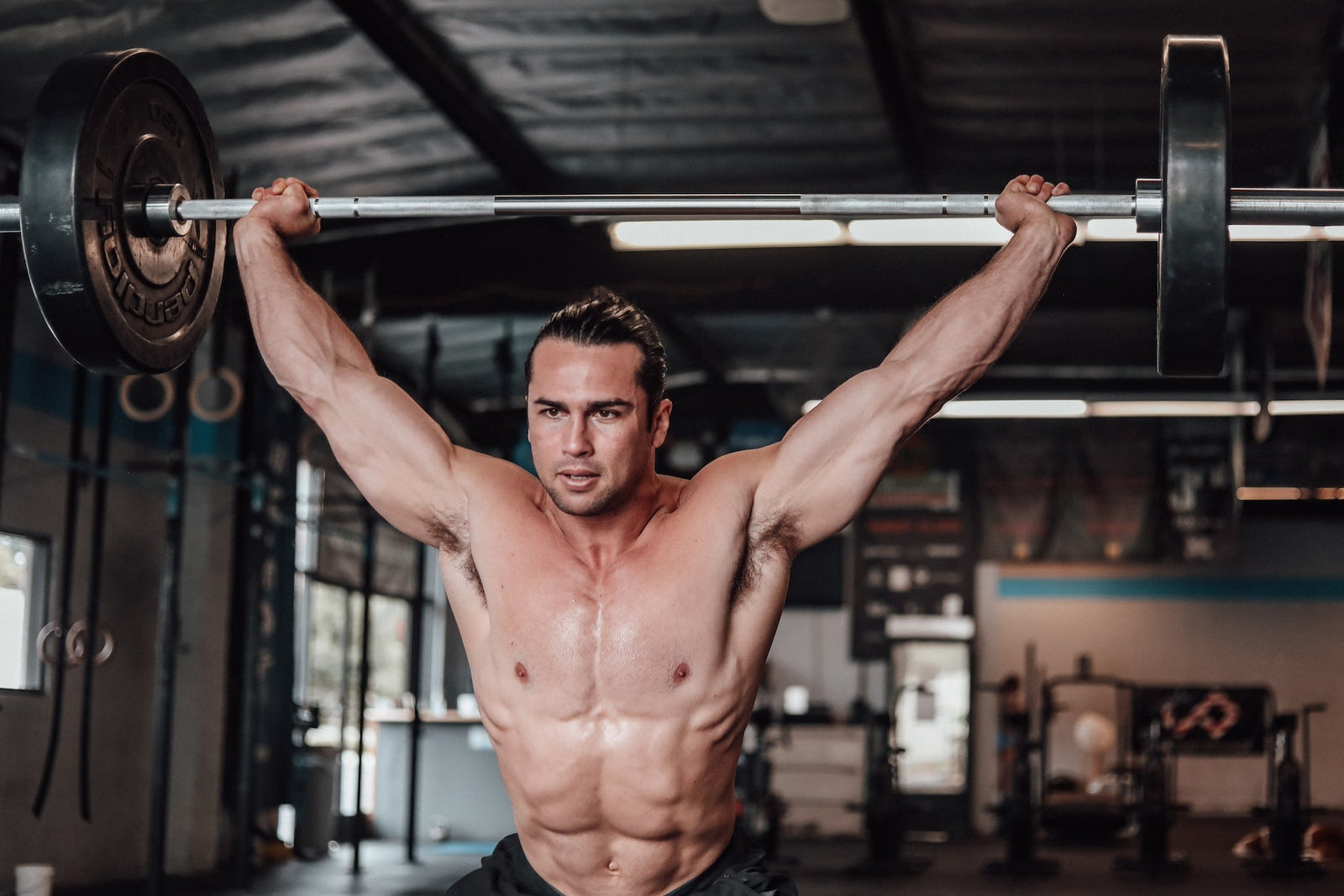Feeling off lately? Low energy, decreased muscle mass, stubborn weight gain, brain fog, and a drop in libido might not just be signs of aging — they could point to low testosterone levels. Testosterone Replacement Therapy (TRT) has become an increasingly popular and widely discussed treatment option for men looking to reclaim their vitality, performance, and quality of life. But with so much information (and misinformation) out there, how do you know if TRT is right for you?
In this comprehensive guide, we’ll break down everything you need to know about TRT — what it is, who it’s for, how it works, potential risks and benefits, and what to expect from treatment. Whether you're just starting to explore your options or already considering therapy, this post will give you the facts you need to make informed decisions about your health and hormones.
Understanding Testosterone Replacement Therapy (TRT): What You Need to Know
Aging and Hormonal Decline
As you get older, your body begins to change. Staying in shape and maintaining the same physique you had at 25 becomes significantly harder by the time you hit 40. That's just a biological reality. The diet and training habits that worked in your twenties may no longer serve your goals in your forties and beyond.
One of the most significant factors behind these changes is the gradual decline in hormone production, particularly testosterone. This hormonal shift affects:
-
Body composition (increased fat mass, reduced muscle mass)
-
Energy levels and motivation
-
Sleep quality
-
Libido and sexual performance
-
Recovery from workouts
In response, testosterone replacement therapy (TRT) has emerged as a widely used intervention to help restore hormonal balance, enhance physical function, and rejuvenate overall quality of life (Bassil et al., 2009, Journal of Clinical Interventions in Aging).
In this guide, we’ll break down what testosterone is, how it works, and what you need to know about qualifying for TRT, including the benefits and risks involved.
What Is Testosterone?
The Role of Testosterone in the Body
Testosterone is a primary androgenic and anabolic steroid hormone produced naturally by the human body. In men, it's primarily synthesized in the testes, and in smaller amounts in the adrenal glands. In women, smaller quantities are produced in the ovaries and adrenal cortex.
Testosterone plays a vital role in:
-
Developing lean muscle mass and strength
-
Enhancing mood and cognitive function
-
Improving bone mineral density
-
Increasing libido and sexual health
-
Regulating fat distribution and metabolism
It also activates the nervous system, enhancing performance, reflexes, and neuromuscular efficiency (Nieschlag & Behre, 2012, Testosterone: Action, Deficiency, Substitution).
How Does Testosterone Work?
Hormonal Regulation Through the HPG Axis
Testosterone secretion is regulated via the hypothalamic-pituitary-gonadal (HPG) axis in a pulsatile manner. Here's how the cascade functions:
-
Gonadotropin-releasing hormone (GnRH) is released from the hypothalamus
-
GnRH stimulates the pituitary gland to release:
-
Luteinizing hormone (LH)
-
Follicle-stimulating hormone (FSH)
-
-
LH binds to receptors on Leydig cells in the testes (or theca cells in females)
-
This triggers a signaling cascade, resulting in testosterone synthesis and secretion
Testosterone cannot be stored—it is immediately secreted into circulation once synthesized (Mooradian et al., 1987, Endocrine Reviews).
Transport and Receptor Binding
Once in the bloodstream:
-
98–99% of testosterone binds to sex hormone-binding globulin (SHBG) or albumin
-
The remaining 1–2% is free testosterone, the biologically active form
Free testosterone binds to intracellular androgen receptors (ARs). The testosterone-AR complex then translocates to the cell nucleus, where it triggers gene transcription—turning on specific genes responsible for muscle growth, protein synthesis, bone development, and metabolic function (Matsumoto, 2002, The Journal of Clinical Endocrinology & Metabolism).
Benefits of Testosterone Replacement Therapy (TRT)
When medically supervised and administered appropriately, TRT has been shown to offer numerous benefits, especially for men with hypogonadism (low testosterone levels), including:
-
Increased muscle mass and strength
-
Improved mood and mental clarity
-
Higher energy levels and reduced fatigue
-
Improved sleep quality
-
Enhanced libido and erectile function
-
Decreased fat mass and improved metabolic health (Saad et al., 2011, Aging Male)
Risks and Considerations of TRT
Despite its potential advantages, TRT is not without risk. Possible side effects include:
-
Acne and oily skin
-
Increased red blood cell count (polycythemia)
-
Fluid retention
-
Worsening of sleep apnea
-
Testicular shrinkage and infertility
-
Gynecomastia (breast tissue development)
There are also concerns about cardiovascular health, though data remains mixed and continues to be evaluated (Vigen et al., 2013, JAMA). TRT should only be initiated under the guidance of a medical professional following appropriate lab work.
How to Qualify for TRT
To qualify for TRT, patients must meet specific clinical and laboratory criteria, typically including:
-
Consistent symptoms of low testosterone: fatigue, low libido, brain fog, muscle loss
-
Documented low serum testosterone levels (usually below 300 ng/dL on two separate morning blood tests)
-
Normal prolactin, thyroid, and cortisol levels to rule out other causes
Additional tests may include:
-
CBC (to monitor red blood cell count)
-
Lipid panel and liver function tests
-
PSA (prostate-specific antigen) for men over 40
Medical professionals may recommend various TRT delivery methods, including:
-
Intramuscular injections (e.g., testosterone cypionate or enanthate)
-
Topical gels and creams
-
Pellets or patches
Here is your fully revised version of the content with:
-
Header 1 and Subheader 2 formatting for improved readability
-
Expanded explanations and additional context for clarity and value
-
Credible, linked citations from peer-reviewed sources
-
All original messaging and information preserved, optimized for SEO and professional tone
Symptoms of Low Testosterone and the Benefits of Treatment
Age-Related Hormonal Decline
Testosterone deficiency (hypogonadism) affects an estimated 10–40% of the global male population, and its prevalence increases with age. After the age of 30, testosterone levels decline at a rate of approximately 0.4–2% per year (Harman et al., 2001, Journal of Clinical Endocrinology & Metabolism).
By the time men reach their 70s, they may have 35% lower testosterone levels compared to men in their 30s or 40s. This decline isn’t just about sex drive—it affects body composition, energy, cognitive function, metabolism, and overall vitality.
Additionally, both men and premenopausal women experience a decline in DHEA and DHEA-S, adrenal hormones that serve as precursors to androgens like testosterone (Labrie et al., 2005, The Journal of Steroid Biochemistry and Molecular Biology).
Common Symptoms of Low Testosterone
Low testosterone levels can cause a wide array of physical, mental, and sexual health symptoms, including:
-
Increased body fat, especially abdominal and visceral fat
-
Loss of lean muscle mass and strength
-
Hair loss, including facial and body hair
-
Reduced sex drive (libido)
-
Chronic fatigue or low energy
-
Difficulty achieving or maintaining erections
-
Mood changes, including irritability, depression, or anxiety
-
Sleep disturbances, including insomnia or poor sleep quality
In addition, anabolic resistance—a diminished response to training stimuli—makes it increasingly difficult to build or maintain muscle mass with age. This effect is compounded by rising body fat levels, which can make fat loss more challenging despite increased effort in diet and exercise.
Contributing Factors That Suppress Testosterone
In addition to aging, several lifestyle and environmental factors can contribute to low testosterone, including:
-
Poor sleep quality
-
High alcohol consumption
-
Micronutrient deficiencies (especially zinc, magnesium, and vitamin D)
-
Chronic stress and elevated cortisol
-
Diets high in refined sugars and trans fats
Optimizing testosterone levels often starts with addressing these root causes before considering more advanced interventions.
Benefits of Increasing Testosterone
Increases Lean Muscle Mass
Testosterone is an anabolic-androgenic steroid hormone (AAS) that binds to the androgen receptor (AR), triggering gene transcription involved in muscle protein synthesis. This cascade leads to:
-
Increased muscle fiber growth
-
Improved lean body mass
-
Enhanced strength and power output
-
Greater bone mineral density
This makes testosterone essential for physical performance, recovery, and injury prevention (Bhasin et al., 2001, New England Journal of Medicine).
Improves Sex Drive (Libido)
Testosterone is the primary male sex hormone, responsible for maintaining libido and regulating the erectile process via enzymes like nitric oxide synthase (NOS) and PDE5. Low levels can lead to reduced interest in sex, erectile dysfunction, and decreased satisfaction.
A study evaluating exogenous testosterone (200 mg testosterone enanthate weekly) found that participants reported significant improvements in psychosexual stimulation and overall libido compared to placebo (O’Carroll & Bancroft, 1984, Psychoneuroendocrinology).
Supports Weight Loss and Fat Reduction
Testosterone plays a major role in fat metabolism and energy expenditure. Low levels of testosterone can:
-
Reduce resting metabolic rate
-
Increase fat storage, particularly visceral fat
-
Lower muscle mass, leading to fewer calories burned at rest
Visceral fat contains high levels of the enzyme aromatase, which converts testosterone into estrogen. Elevated aromatase activity reduces gonadotropin-releasing hormone (GnRH) and subsequently luteinizing hormone (LH), further lowering testosterone production (Wu et al., 2010, Journal of Clinical Endocrinology & Metabolism).
How to Qualify for Testosterone Replacement Therapy (TRT)
Medical Evaluation
To determine if you’re a candidate for testosterone replacement therapy (TRT), your physician will assess the following:
-
Symptoms consistent with low testosterone
-
Two separate blood tests (drawn in the morning) showing total testosterone levels below ~300 ng/dL
-
Normal or low free testosterone levels
-
Rule-outs for other conditions (e.g., thyroid dysfunction, prolactinoma)
Additional tests may include:
-
Prostate-specific antigen (PSA) levels
-
Liver and kidney function panels
-
Hemoglobin/hematocrit for red blood cell monitoring
-
Lipid panels
Causes Beyond Aging
Not all cases of low testosterone are age-related. You may also be a candidate for TRT if you are diagnosed with hypogonadism, a condition in which the gonads fail to produce adequate testosterone. This can be caused by:
-
Genetic conditions (e.g., Klinefelter syndrome)
-
Pituitary gland dysfunction
-
Injury or trauma to the testes
-
Cancer treatment (radiation or chemotherapy)
TRT can help restore libido, mood, vitality, and physical performance in these cases.
Final Thoughts
Low testosterone affects far more than just sexual health—it influences your entire physiology, from muscle mass and metabolism to mood and mental clarity. While TRT can be an effective intervention, it’s important to take a comprehensive approach:
-
Address root causes
-
Optimize sleep, stress, and nutrition
-
Get medical labs and work with a qualified provider
-
Consider natural testosterone boosters like Swolverine’s ZMT before prescription therapy
Here is your fully revised version of the content with:
-
Header 1 and Subheader 2 formatting
-
All original content preserved and expanded
-
Credible, linked scientific sources
-
Professional structure, ideal for educational, clinical, or SEO-optimized use
Testosterone Replacement Therapy (TRT) Treatment Options
TRT Overview and Goals
Testosterone Replacement Therapy (TRT) aims to restore testosterone levels to a physiological range, typically 300–800 ng/dL, depending on the individual’s age, symptoms, and lab results (Bhasin et al., 2018, The Journal of Clinical Endocrinology & Metabolism).
The core objectives of TRT are to:
-
Restore sex drive and libido
-
Maintain or promote virilization (masculine traits like body hair, muscle mass, and deeper voice)
-
Optimize bone mineral density
-
Stabilize hormonal levels
-
Support fertility (in select cases)
-
Improve body composition (reduce fat, increase lean mass)
-
Enhance mood, energy, and sleep quality
TRT Delivery Methods
To achieve these outcomes, several delivery systems for testosterone are available. The best choice depends on patient preference, cost, convenience, and absorption rate:
1. Transdermal Patches
-
Applied daily to the skin
-
Provide stable, controlled release
-
May cause skin irritation in some users
2. Topical Gels and Creams
-
Common brands include AndroGel and Testim
-
Applied to shoulders, arms, or abdomen
-
Easy to apply but may transfer to others via skin contact
3. Intramuscular Injections
-
Testosterone cypionate or enanthate
-
Typically administered weekly or biweekly
-
Cost-effective, highly bioavailable
-
May cause hormonal fluctuations between doses
4. Subcutaneous Pellets
-
Implanted under the skin every 3–6 months
-
Provide long-term, steady testosterone release
-
In-office procedure required
5. Oral Testosterone Undecanoate
-
Less commonly used due to liver metabolism
-
Newer formulations may bypass hepatic toxicity risks
-
Still under clinical observation for long-term safety (Saad et al., 2021, Therapeutic Advances in Urology)
TRT Risks and Considerations
Suppression of Natural Testosterone
One of the primary risks of TRT is suppression of endogenous testosterone production. Because exogenous testosterone creates negative feedback on the hypothalamic-pituitary-gonadal (HPG) axis, it reduces the secretion of:
-
Luteinizing hormone (LH)
-
Follicle-stimulating hormone (FSH)
-
Sex hormone-binding globulin (SHBG)
This feedback loop often leads to shrunken gonads, reduced fertility, and dependency on continued TRT for hormone maintenance (Matsumoto, 2002, The Journal of Clinical Endocrinology & Metabolism).
Cardiovascular and Prostate Health Risks
Chronic or supra-physiological levels of testosterone may affect the cardiovascular system, especially when combined with anabolic steroid use. Potential issues include:
-
Hypertension
-
Increased risk of stroke
-
Myocardial infarction (heart attack)
-
Changes in lipid profiles
-
Left ventricular hypertrophy
There are also concerns regarding prostate health, including:
-
Prostate hypertrophy (BPH)
-
Potential acceleration of undiagnosed prostate cancer
Regular PSA testing and digital rectal exams (DREs) are recommended for men over 40 on TRT (Vigen et al., 2013, JAMA).
Estrogen Conversion and Gynecomastia
Testosterone is aromatizable, meaning it can be converted to estradiol, a form of estrogen. In men, elevated estrogen can lead to:
-
Gynecomastia (breast tissue development)
-
Increased visceral fat accumulation
-
Mood swings or emotional instability
Gynecomastia occurs in approximately 10–25% of men on TRT (Rhoden & Morgentaler, 2004, New England Journal of Medicine). Estrogen levels should be monitored and, if needed, aromatase inhibitors (e.g., anastrozole) can be prescribed to prevent estrogen dominance.
TRT: Final Takeaway
If you’re feeling chronically fatigued, gaining unwanted body fat, or struggling to build muscle despite clean eating and consistent training, you may have low testosterone levels. Symptoms of low T are common but can be reversed or managed effectively with medical supervision and TRT.
Steps to Take:
-
Get a comprehensive blood panel—test testosterone, SHBG, estradiol, LH, FSH, DHEA, and PSA
-
Speak with your physician or hormone specialist
-
Review all therapy options and risks before starting TRT
-
Monitor hormone levels regularly during treatment
Looking For A Way To Naturally Increase Testosterone Levels?
SWOLVERINE IS AN ENDURANCE ATHLETE AND ACTIVE LIFESTYLE BRAND. MADE FOR THE ELITE ATHLETE, AND THE STRONG-WILLED OUR PRODUCTS WERE DESIGNED TO FUEL YOUR ATHLETIC PERFORMANCE. WE PERFORM WHEN YOU PERFORM.
We believe that everyone can optimize not only their athletic performance but their human potential. The way we believe we can optimize performance is through transparency, clinically effective doses, and clinically proven ingredients with evidence-based outcomes. We provide the nutrients you need to power your active lifestyle
Find similar articles:
Anabolics






